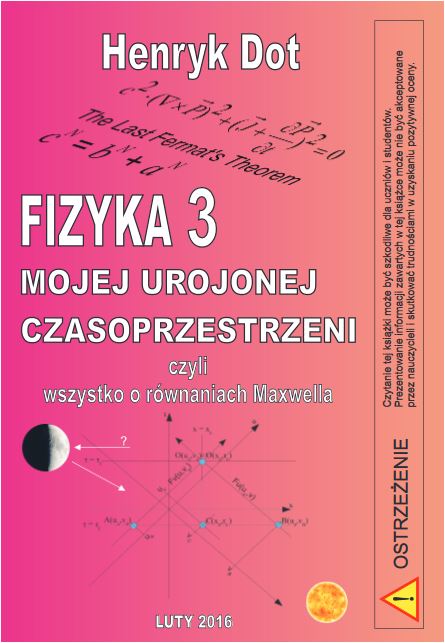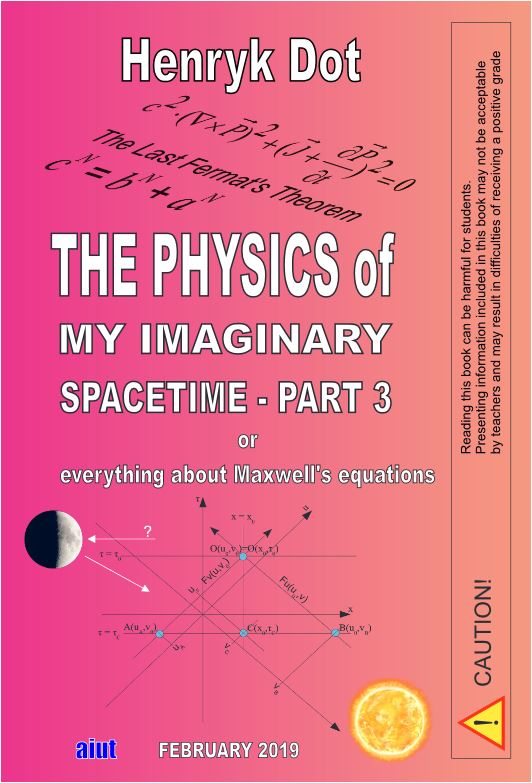is the online companion to a series of books published by AIUT under the common main title
"Physics of My Imaginary Space-Time" by Henryk Dot.
Physics 3 - Maxwell
Note from the Author
Table of Contents
What is this book
Historical facts
New aspects
Fully erroneous
Incorrectly interpreted
Physics 3 - Chapter 1
Equations
Complex vectors form
The Most General form
The General Solution
Physics 3 - Chapter 2
Solutions
Initial conditions
Non-homogeneous equation
Solution for three-directions
The four laws
Physics 3 - Supplement
Fermat's proof
Beal's conjecture
Pythagorean triples
Inertial mass
Gravity constans big G
What does the Moon look at?
Physics 3 - Final notes
Final notes
Physics 4 - New book
Entry
"Subject" should begin with
a digit corresponding to the day
of the week., e.g. Sunday=7
Books published by AIUT
are found in libraries according to the list of compulsory copies.
Second Edition of "Fizyka 3"
ISBN 978-83-926856-1-6

can be bought in Warsaw
in the Academic Bookstore
PW Publishing House
Noakowskiego street 18/20
and in Katowice
in the bookstore "Liber"
Bankowa street 11.
(area of Silesian University)
English edition of "Physics"
ISBN 978-83-926856-2-3

is also in libraries
and the distribution method should be asked wydawca@aiut.com.
|
3.2. The origin of inertial mass and equation E = mc2 In order to explain inertial mass effect, let’s consider a wave having momentum pf,
and “trapped” in a selected direction in a segment which length is equal L.
We will consider behavior of this wave when our segment L
travels in the same direction at a velocity = v. |
© 2020 Henryk Dot -
